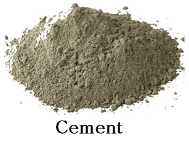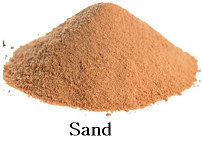Table of Contents
Rate Analysis for Cement Plaster
Hello, friends, I have written an article on Rate Analysis for gypsum plaster before. Some of you requested a comparative cost of cement sand plaster against gypsum plaster.
So in this article, we will discuss cement sand plaster for internal wall plastering work. In my previous article, I have worked out the cost of gypsum plaster.
If the cost of gypsum plaster is 309 rupees per square metre for 13 mm thickness, then what is the cost of cement sand plaster for 13 mm thickness?
Generally, for internal plaster, the thickness of cement sand plaster is 12 to 15 mm and hence will consider 13mm thick cement sand plaster in this rate analysis.
So let’s Start
Consider a 10 square metre area for 13 mm thick plaster.
The volume of mortar should be = 0.013 ×10 = 0.13 cubic metre
Now add 10% for joint filling and uneven surface of plaster = 0.13 × 10%= 0.013 cum
Now add 35% for wet to dry volume that is (0.13 + 0.013) × 35% = 0.05 cubic metre
So the total cement mortar quantity is = 0.13 + 0.013 + 0.05 = 0.193 say 0.2 cubic metre
Cement Quantity

Now we will calculate the number of cement bags required for 10 square meter areas of plaster.
Consider the cement mortar ratio 1:4
Cement quantity = 0.2/(1 + 4) = 0.04 cubic metre
One is the proportion of cement, and 4 is the proportion of sand in cement mortar 1:4 ratio.
Add wastage of 3% = 0.04 × 3% = 0.0012 cubic metre
Total quantity of cement should be 0.04 + 0.0012 = 0.0412 cubic meter
Now we will convert it into the number of cement bags.
The volume of 1 bag of cement is 0.035
So Numbers of Cement bag = 0.0412/0.035 = 1.177 number.
We will consider the rate of cement bag 300 rupees, so the amount of cement for 10 square metre area is = 1.177 × 300 = 353.1 say 353 rupees.
Sand Quantity

River sand required for 10 square metre plaster area is = 0.04 × 4 = 0.16 into cubic metre
Add wastage of 15% for send = 0.16 × 15% = 0.024 cubic metre
Total quantity of sand including wastage = 0.16 + 0.024 = 0.184 cubic metre
Consider a rate of rivers sand 30000 rupees per hiva of 500 cubic feet or 14.16 cubic meter. That means 30000/14.16 = 2118.64 say 2119 rupees per cubic metre.
So the amount of river sand required for a 10 square metre area of plaster = 0.184 × 2119 = 389.89 say 390 rupees.
Now Total material cost is = 353 + 390 = 743 rupees
Now we will add scaffolding cost that is 20 rupees per square metre = 10 × 20 = 200 rupees. 10 is the area of plaster.
Now add transportation cost tools tackles and consumables at 5% so = 743 × 5% = 37.15 rupees
ads 1% for safety = 743 × 1% = 7.43 rupees
Subtotal = 743 + 200 + 37.15 + 7.43 = 987.58 rupees
Labour Cost
The market rate of labour for internal cement sand plaster is 10-15 rupees per square feet, so labour cost for 10 square metre area is = 15 × 10 × 10.764 = 1614.6 rupees.
Final Rate
Now the subtotal = 987.58 + 1614.6 = 2602.18 rupees
Now add 15% for overhead and profit = 2602.18 × 15% = 390.33 rupees
Total rate for 10 square metre area is = 2602.18 + 390.33 = 2992.51 say 2993 rupees
Rate per square metre for cement sand plaster is equal = 2993/10 = 299.3 say 300 rupees or 27.87 say 28 rupees per square feet.
So the rate of cement sand plaster for 13 mm thickness is 300 rupees per square metre.
For gypsum plaster of 13 mm thickness, the rate is 309 rupees per square metre.
Conclusion
So now, you can compare the cost of gypsum plaster and cement sand plaster. Here for the same thickness, the cost of cement sand plaster is slightly less than gypsum plaster. But here’s the catch is
- But Cement plaster requires curing to gain strength while gypsum plaster doesn’t require curing hence saving in curing cost.
- In cement plaster, before making mortar, we have to sieve the river sand to remove gravels, while in gypsum plaster, there is no need to sieve.
- Also, we have to do the pop punning on cement sand plaster for better surface finish, but in gypsum plaster, pop punning is not necessary.
Also, read – Difference Between Cement Plaster and Gypsum Plaster
So we have to consider the cost of these too with cement sand plaster. Hence the ultimate result is the cost of cement sand plaster will be more than gypsum plaster.
Important note
- The material rates considered in this rate analysis are exclusive of GST.
- The material and Labour rates may vary depending on the site Conditions, Type of project and Class of contactor.
So, friends, this is the fundamental rate analysis for cement sand plaster. Like this article, if you learn something and share it with someone who might benefit from it and you can mention your views about cement sand plaster in the comment section.
Also, read
How to Calculate Quantity of Materials For Plaster?
How to Calculate Brick, Cement and Sand in Brickwork?
How to Calculate Cement, Sand, Aggregate and Water Quantity for Concrete Mix Ratios?